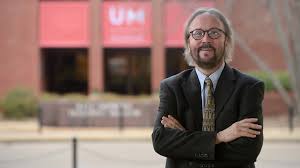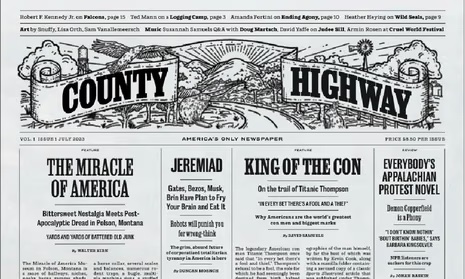Saarnio reflects on 13 Years at the helm of the University of Mississippi Museum
Published 9:33 am Monday, June 16, 2025

- After more than a decade of leading the University of Mississippi Museum, Director Robert Saarnio is stepping down. Photo from UM Communications
After more than a decade of leading the University of Mississippi Museum, Director Robert Saarnio is stepping down, leaving behind a legacy defined by accessibility, growth and national recognition.
Saarnio arrived in Oxford in the fall of 2012, trading the beaches of Honolulu, Hawaii, where he had spent six years at the Honolulu Museum of Art, for the historic charm of Mississippi.
After arriving in Oxford for his interview at the university, it didn’t take long for him to know he was meant to be in Oxford.
Trending
“The University invited me to stay for at least two days, maybe three, and I got to meet so many people and see so much of the city, and the museum, of course,” Saarnio said. “The Bailey Woods Trail was the last thing I walked before I got on the plane back to Hawaii, and I thought, ‘Oh my God, if they offer this job, I will so come to Mississippi.’”
Originally from Minnesota, Saarnio admits that the South wasn’t on his radar as a place to settle.
I’d never lived in the South, and I never imagined living in the South, but now it’s my home. The southern hospitality was so genuine and on full display,” he said. “The warmth of my welcome just completely powered past any culture shock.”
After completing a master’s degree in historic preservation at the University of Pennsylvania, he landed a job as curator of architecture at the Peabody Essex Museum in Salem, Massachusetts.
“Within two weeks or less, I realized that I was hooked on the museum field,” he said. “It was something I never foresaw. Complete serendipity.”
In Oxford, he quickly set to work expanding what was already a respected university museum. One of the first major changes came in his first year: eliminating the admission fee.
Trending
“We could see immediately that there was no reason financially for us to be charging admission. Free admission meant no income barriers, which meant greater access,” he said. “You can come to this museum, even including Saturdays, park for free, walk in, and stay for two hours or five minutes. No barriers.”
That mindset of inclusion translated into broader access in other ways as well. Under Saarnio’s leadership, the museum digitized its antiquities collection, allowing students, scholars, and the general public to explore it online.
“Whether it’s a student in her dorm or a collector in Tokyo, our collections are accessible worldwide,” he said.
Saarnio also points to increased visibility as a proud milestone.
“The museum appeared in four different national rankings stories over a few years. That had never happened before,” he said. “It wasn’t about me arriving and making it famous—it was the result of a brilliant staff, supportive university leadership and a growing ecosystem of support.”
The museum’s full-time staff increased from five to eight during his tenure, and Roanoke—the historic home of William Faulkner operated by the museum—added its first assistant curator.
One of the most meaningful moments came in 2019, when the museum acquired the entire contents of Rowan Oak from the Faulkner family.
“For decades, the contents were on loan from the family, even after the university purchased the house in 1972,” he said. “Thanks to the generosity of Sandy and John Black, the entire collection was secured permanently. That was huge.”
Saarnio also highlights the museum’s publishing achievements, made possible by longtime collaborator the late Dr. Anne Abadie, who edited two significant books: “The Beautiful Mysterious: The Extraordinary Gaze of William Eggleston” and “American Landscapes,” inspired by a William Dunlap painting.
“Publishing is something museums aspire to but don’t always have the resources for,” he said. “Those two hardcover volumes are real points of pride.”
Even after his June 30 retirement, Saarnio said he isn’t going far.
“It never, once, ever occurred to me to retire and depart from Oxford,” he said. “I’ve found such a home here.”
He plans to stay active—volunteering with the city’s Historic Properties Commission and the Mississippi Heritage Trust, continuing to serve on a national board for academic museums, and finally having time to travel.
“I can travel with my lovely partner, Andi Bedsworth,” he said. “We’re going to the Winter Olympics in Milan in February. Big bucket list item.”
While a national search for his successor nears its end, Saarnio is confident the museum is in good hands.
“The staff of this museum are so strong, talented, and skilled,” he said. “If I was ever going to pass the baton comfortably and confidently, now’s the time.”





